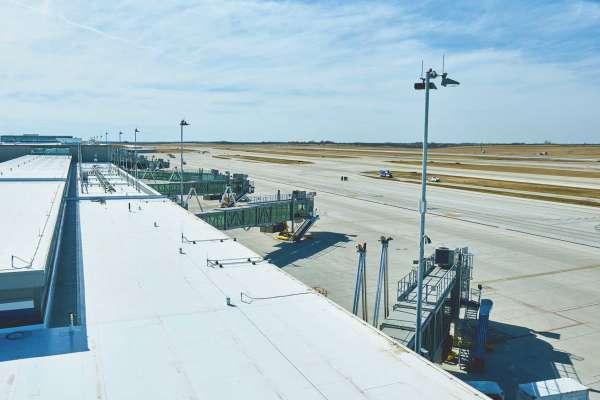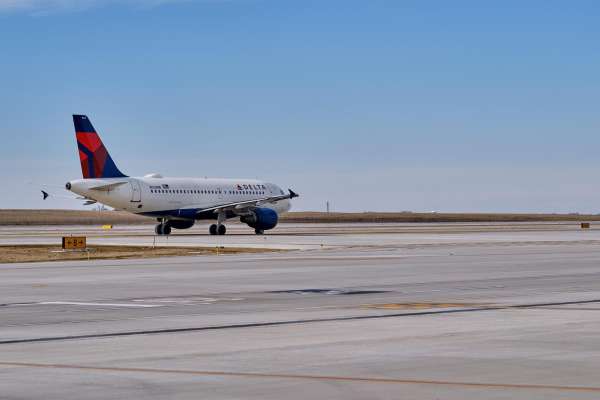Elevating the Game
Garver’s cross-disciplinary expertise provides the City of Fayetteville with a state-of-the-art sports complex at Kessler Mountain Regional Park.
The City of Fayetteville, Arkansas was in need of a space to not only host various youth athletic events, but also provide residents and visitors with outlets for cycling, hiking, and playgrounds. Without it, local youth leagues couldn’t grow, and residents were left searching for recreation opportunities elsewhere.
The City had a location perfect for this purpose - Kessler Mountain Regional Park. Originally 200 acres of cattle ponds and pasture, the area had not only been remade into a beautiful space for residents and visitors, but had also grown to 620 acres, making it Fayetteville’s second largest park.
Garver’s Northwest Arkansas Municipal Team acted as subconsultant for phase one of the park’s master plan, responsible for drainage, roadway, water and sewer, sewer treatment plant, and the structural design of the buildings. At the end of that phase, in 2016, Kessler was outfitted with four lighted baseball fields, alongside six soccer fields, two restroom and concessions buildings, and 400 parking spaces.
The park was getting there; it just didn’t yet have the field capacity and all the amenities required for a sports complex of the size and quality the City needed and had planned. Phase two would bring an additional four lighted baseball fields, another restroom and concessions building, a new 211-space parking lot, batting cages, and bleachers. And Garver, this time as the prime designer, would deliver everything needed, plus the next-level enhancements families and traveling teams expect.
"The cross-discipline approach is so effective, because it leads to good communication and common quality expectations; the project’s structural engineers, MEPs, architects - everyone involved - expected very high-quality deliverables."
Ron Petrie, PE
Northwest Arkansas Municipal Leader
Comprehensive Services
Garver Transportation Project Manager Zach Moore, PE, led the project. Leveraging the expertise of those on Garver’s Buildings, Federal, Transportation, Construction, Water, and Survey teams, Moore had all the resources needed for Garver to complete the project in house.
What’s unique about this collaborative effort is how routine it is.
“It’s nothing new for Garver to utilize the expertise we have on our different teams,” Moore said. “So what might at first seem like it’s out of our wheelhouse is not. We’ve designed or rehabbed everything from parking decks to Olympic-size pools to a biofuel station.”
“The cross-discipline approach is so effective,” said Northwest Arkansas Municipal Leader Ron Petrie, PE, “because it leads to good communication and common quality expectations; the project’s structural engineers, MEPs, architects - everyone involved - expected very high-quality deliverables.”
All of which yielded a great result for the City.
Two intermittent streams flow through Kessler Mountain, and Garver addressed drainage with the building of seven stormwater ponds. They handled environmental mitigation as well, planting Water Tupelo, Baldcypress, Black Gum, and other trees and flowering bushes that are compatible with the environment and are low maintenance.
Garver’s structural engineers and architects fit the concession and restroom building to the landscape of the park, using exposed wood in the beams and a stone finish to make the building reflect its surroundings. The restroom was designed to withstand heavy use and to resist misuse.
Garver’s MEPs made certain that the concession stands got commercial kitchen capabilities. LED sports lights were installed to provide high visibility and save the City money.
Elite Playing Surfaces
And then there were the baseball fields, batting cages, stands, dugouts, and stone markers for the stadium complex. Garver Landscape Architect Brent Thomas, PLA, CPSI, designed features that provide comfort, ease of maintenance, and playability.
Bleachers are shielded from the sun by shade structures. Covered dugouts protect players from sun and inclement weather and contain a moveable bench. Infields are covered in artificial turf, which is marked for different age groups, allowing for the easy adjustment of bases and so forth, depending on who’s playing. And that turf is on top of a drainage system that whisks rainwater away, keeping the field ready for play (the City retrofitted the four fields built in phase one with this improved system). Batter’s boxes, a notoriously worn part of the field, are connected to the turf with Velcro, and can be pulled up and replaced when they begin to deteriorate.
Stone markers, bearing the City seal and the different names of each part of the complex, not only help to direct people to the correct field, but also convey the City’s brand. The stone on the markers matches that on the restroom and concession buildings, and blends with the surrounding landscape.
For Thomas, working on a sports complex of this size and quality, and being a part of a firm with the capabilities to complete that work in house, are a source of pride.
Petrie and Moore share this feeling and enjoy a more personal connection to this recreational attraction as they live in Northwest Arkansas and regularly use the park. Moore attended the Kessler ribbon cutting with his children.
“It was really rewarding, seeing all the smiling kids enjoying the park,” he said. “And that’s one of the best parts of this project, knowing that we designed a place that will give so many people so many good memories for generations to come.”






Share this article